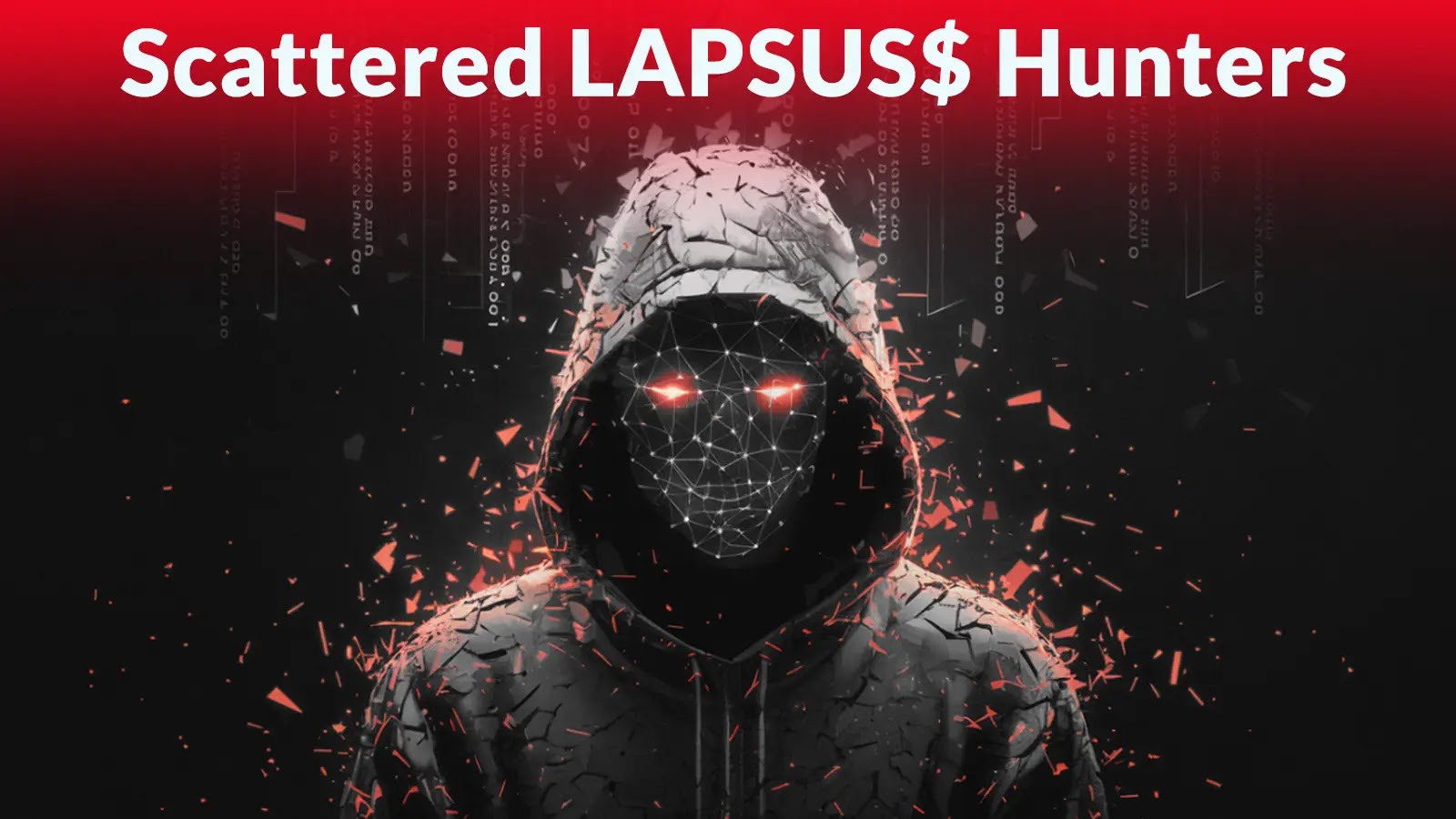
Three Infamous Cybercriminal Groups Form a New Alliance Dubbed ‘Scattered LAPSUS$ Hunters’
A New Threat Landscape: The Rise of Scattered LAPSUS$ Hunters (SLH)
The cybersecurity threat landscape is constantly evolving, with cybercriminal groups continually adapting their tactics and organizational structures to maximize impact and evasion. A significant and concerning development has emerged in early August 2025: the consolidation of three notoriously effective threat groups into a unified cybercriminal entity known as Scattered LAPSUS$ Hunters (SLH). This strategic alliance, bringing together Scattered Spider, ShinyHunters, and LAPSUS$, represents a pivotal shift, marking the first known federated alliance among mature cybercriminal clusters.
This blog post delves into the implications of SLH’s formation, examining the individual strengths each group brings to this new coalition and what this consolidation means for organizations and cybersecurity defenses worldwide. Understanding this unprecedented collaboration is crucial for proactive defense strategies.
The Architects of SLH: A Look at the Federated Groups
The formation of Scattered LAPSUS$ Hunters is not merely a rebranding; it’s a strategic merger of capabilities, resources, and — most importantly — proven attack methodologies. To grasp the full scope of SLH’s potential, it’s essential to understand the individual groups that comprise this new supergroup.
- Scattered Spider: Known for their sophisticated social engineering tactics and bypassing multi-factor authentication (MFA). Their primary targets often include technology and telecommunications companies, leveraging human vulnerabilities to gain initial access.
- ShinyHunters: This group specializes in data breaches and subsequent data exfiltration, often targeting e-commerce platforms and private companies to steal customer databases and proprietary information. They are infamous for selling vast quantities of stolen data on underground forums.
- LAPSUS$: A group that gained significant notoriety for highly impactful data extortion campaigns, often combining data theft with destructive actions or public shaming. They are particularly adept at exploiting supply chain vulnerabilities and have targeted high-profile technology firms.
The combination of these distinct, yet complementary, skill sets creates a formidable adversary. Scattered Spider’s initial access expertise, ShinyHunters’ data exfiltration and monetization capabilities, and LAPSUS$’s aggressive extortion and impact-driven operations form a potent, end-to-end cybercriminal pipeline.
Strategic Implications of this Cybercriminal Consolidation
The emergence of SLH signifies a new era in cyber threat organization. This consolidation is not just about pooling resources; it’s about amplifying capabilities and streamlining operations. Organizations should be prepared for several key strategic shifts:
- Enhanced Attack Sophistication: Individual attack campaigns will likely exhibit a higher level of sophistication, integrating the most effective tactics from each constituent group. This means more elaborate social engineering, more elusive data exfiltration, and more aggressive extortion.
- Increased Resilience: A federated structure can offer greater resilience against law enforcement actions. If one part of the alliance is disrupted, the others can potentially continue operations, or the combined group can quickly adapt.
- Broader Target Scope: With diversified skill sets, SLH may be able to target a broader range of industries and organizations, exploiting different weak points across various sectors.
- Faster Attack Cycles: The integration of distinct capabilities could lead to faster reconnaissance-to-exfiltration cycles, reducing the window for detection and response for targeted organizations.
- Supply Chain Risk Amplification: Given LAPSUS$’s history, the alliance is likely to continue and potentially intensify attacks on supply chain entities, leveraging trusted relationships to compromise downstream targets.
This consolidation underscores a trend towards professionalization and industrialization within the cybercriminal underworld. It signals a move away from disparate, independent operations towards more structured, collaborative enterprises.
Protecting Against the SLH Threat: Remediation and Proactive Measures
In the face of a unified and sophisticated entity like Scattered LAPSUS$ Hunters, organizations must adopt a robust and multi-layered cybersecurity posture. Proactive and continuous security enhancements are paramount.
- Strengthen Social Engineering Defenses: Educate employees regularly on phishing, vishing, and other social engineering tactics. Implement strong email filters and conduct spear-phishing simulations. Given Scattered Spider’s expertise, this is a critical first line of defense.
- Enforce Strict Multi-Factor Authentication (MFA): Implement strong, phishing-resistant MFA methods (e.g., FIDO2 hardware tokens) across all accounts, especially for privileged users. Regularly review and audit MFA configurations to prevent bypass techniques.
- Implement Robust Endpoint Detection and Response (EDR)/Extended Detection and Response (XDR): Deploy advanced EDR/XDR solutions to detect and respond to suspicious activities on endpoints and across the network in real-time.
- Enhance Data Loss Prevention (DLP): Implement and fine-tune DLP solutions to monitor and prevent unauthorized data exfiltration, a core capability of ShinyHunters.
- Segment Networks and Principle of Least Privilege: Implement strict network segmentation to limit lateral movement if a breach occurs. Adhere to the principle of least privilege for all users and systems, minimizing the potential impact of compromised credentials.
- Regular Vulnerability Management and Patching: Continuously scan for vulnerabilities and apply patches promptly. Pay particular attention to publicly exposed services and applications.
- Incident Response Planning and Tabletop Exercises: Develop and regularly test a comprehensive incident response plan. Conduct tabletop exercises involving key stakeholders to simulate responses to various breach scenarios, including data theft and extortion.
- Supply Chain Security Audits: Vet third-party vendors and suppliers thoroughly. Understand their security postures and ensure contracts include robust security clauses, especially given LAPSUS$’s focus on supply chain exploitation.
Conclusion: A Call for Heightened Vigilance
The formation of Scattered LAPSUS$ Hunters (SLH) marks a concerning and unprecedented evolution in the cybercriminal ecosystem. This federated alliance of Scattered Spider, ShinyHunters, and LAPSUS$ signifies a new level of organization, sophistication, and threat potential. Organizations can no longer afford to treat these groups as isolated entities; they must prepare for a coordinated, multi-faceted attack strategy.
The message is clear: vigilance must be heightened, defenses strengthened, and security strategies adapted to counter this consolidated threat. Proactive security measures, continuous employee education, and a resilient incident response capability are no longer optional but essential for navigating this new, more complex cyber threat landscape.





